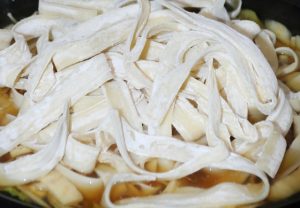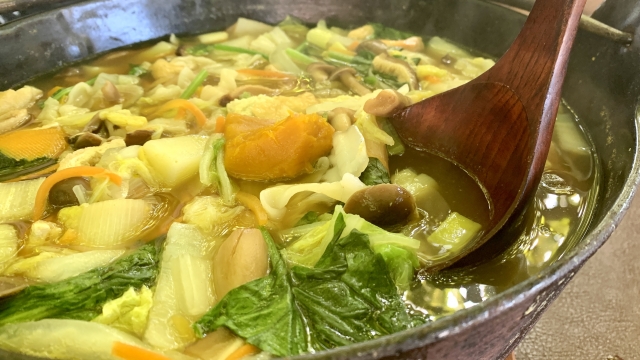Exploring Houtou: A Warm Taste of Japanese Tradition
Introduction:

Houtou, known as “ほうとう” in Japanese, is a beloved regional dish in Japan, particularly in the Yamanashi and Saitama prefectures of the Kanto and Chubu regions. Its defining feature is the thick noodles simmered together with various ingredients in a large pot, creating a dish that exudes a sense of traditional warmth.
Characteristics of Houtou:
The noodles in houtou are distinct from typical udon or soba noodles, being thick and flat, made from a blend of wheat and sometimes buckwheat flour. These noodles are paired with seasonal vegetables, tofu, and a variety of meats or seafood. Locally sourced fresh ingredients, rich in sweetness and umami, are commonly used to enhance the dish’s flavor.
Cooking Process and Flavor:
Houtou is often cooked in large pots, allowing the flavors of the ingredients to meld with the noodles. The result is a rich and flavorful broth that coats the noodles and ingredients, creating a unique taste and texture. While the taste and texture of houtou vary depending on the ingredients and cooking methods, each variation offers a heartwarming dining experience.
Regional Variations and Popularity:
Across different regions like Lake Kawaguchi in Yamanashi and Chichibu in Saitama, houtou exhibits unique local variations. Loved by locals and embraced by tourists, houtou not only delights with its delicious taste but also offers a glimpse into Japan’s regional culture and heritage.
Seasonal Delights and Dining Experience:
Furthermore, houtou reflects seasonal changes in its ingredients and soup flavors, providing diners with a different taste experience with each visit. With numerous restaurants offering local houtou dishes in tourist destinations like Yamanashi and Saitama, visitors are encouraged to explore and savor the charm of houtou while immersing themselves in Japan’s rich culinary traditions.

